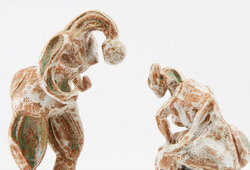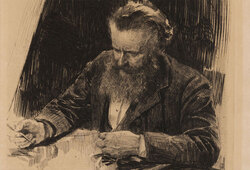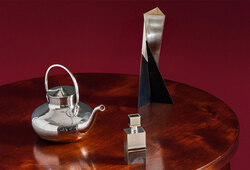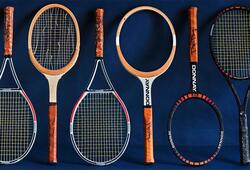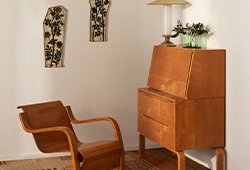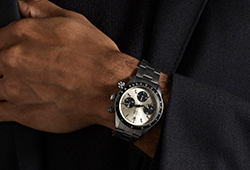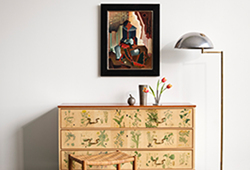Eric Grate
"Hösten"
Signed and numbered Eric Grate No. 2. Foundry mark Herman Bergman fud. Gold patinated bronze, height 56 cm (including stoen base). Executed around 1938.
Literature
Pontus Grate and Ragnar von Holten, "Eric Grate", SAK 1978, p. 82 and 113, compare images on p. 80-81.
More information
"Hösten" är en av fyra kalkstensstatyer i "Årstiderna" som Grate färdigställde 1944 för att placeras i kanslihuset i Stockholm. Grate segrade i den tävling som utlysts där fyra namnkunniga bildhuggare (Ivar Johansson, Nils Möllerberg, Nils Sjögren och Grate själv) hade inbjudits för att delta.
Citat från "Eric Grate" (Ragnar von Holten, Pontus Grate 1978, s. 84)
"Kritiken var enig om, att Eric i 'Årstiderna' förnyat sin gestaltning mot en tyngre och allvarligare skulptural form samtidigt som han bevarat en fin sensibilitet såväl för modellerna som för materialet. 'Hösten' bedömdes vara ett av hans huvudverk och en toppunkt i modern svensk skulptur och skördade liksom 'Våren' idel rosor även när de utställdes i andra sammanhang."
Artist
Eric Grates idiosyncratic world of images always invites exploration and wandering within the imagination. While he respects the the earths natural forms, he sometimes "plays with god", manipulating and playing with nature to create new surprising objects which we recognise but simultaneously dont recall. He borrows fragments from nature and uses his endless imagination to create art in his unique way. His visual language emualtes an aura of abstract surrealism derived from "object trouvés". Grate was inspired by natures radiance and its different forms. Stones, roots, insects, bones, all were transformed into sculptures, particularly the insect world was a source of great inspiration for Grates. During the 1960s, beach, hull, and bones were particularly the starting points for his sculptures. He created numerous official artworks.
Grate began his academic trips after finishing his studies at Royal Swedish Academy of Fine Arts from 1979-20, where he travelled to Italy and Greece, filling his sketchbooks with studies of insects, plants, unique architecture, sculpture, and ceramics. He spent a longer period between 1924 and 1933 in Paris, a formative period where he was one of the few Swedish artists who was associated with the avante garde; we got in contact with none other than the surrealists Jean Arp, Paul Eluard, and Tristan Tzara. Grate is seen by many as one of Sweden's most influential sculptors during the 1900s.
Read more





